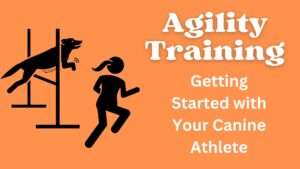Are you looking to keep your canine companion healthy and happy with just the right amount of activity?
Discover everything you need to know about moderate exercise for dogs in this comprehensive guide.
Contents Overview
Understanding Moderate Exercise
Moderate exercise strikes a balance between keeping your dog active and preventing overexertion. It’s crucial to tailor activities to your dog’s breed, age, and overall health for optimal results.
Three basic parameters define moderate exercise:
1- Balanced Activity
Moderate exercise involves activities that provide a healthy level of physical exertion without pushing your dog to the point of exhaustion.
2- Sustainable Effort
It’s about finding the sweet spot where your dog gets enough movement to stimulate their body and mind without overtaxing their energy reserves.
3- Tailored Approach
The intensity and duration of exercise should be adjusted based on factors such as your dog’s breed, age, size, and overall health.
Understanding Your Dog's Needs
Before diving into designing an exercise routine, it’s essential to understand your dog’s requirements and limitations.
Factors to consider include:
1- Breed
Different breeds have varying energy levels and exercise requirements. For instance, breeds like Border Collies and Labrador Retrievers are high-energy and need more exercise compared to breeds like Bulldogs or Pugs.
2- Age
Puppies have different exercise needs than adult or senior dogs. While puppies require shorter bursts of activity to prevent overexertion, older dogs may need gentler exercises to avoid joint pain and stiffness.
3- Health
Consider any pre-existing health conditions your dog may have, such as arthritis or heart problems, which could affect their ability to exercise. Always consult your veterinarian before starting a new exercise regimen, especially for senior dogs or those with health issues.
4- Size
Smaller breeds may not need as much exercise as larger breeds due to their lower energy levels and faster fatigue.
Signs of Overexertion or understimulation
While regular exercise is essential, it’s equally crucial to watch for signs of overexertion or understimulation in your dog.
Be attentive to their body language and behavior, and adjust the routine accordingly if you notice any of the following signs:
- Excessive panting or drooling
- Limping or lameness
- Reluctance to move or exercise
- Excessive barking or destructive behavior
- Signs of fatigue or exhaustion
Benefits of Moderate Exercise for Your Dog
Regular exercise is as vital for your furry friend as it is for you. Discover the multitude of benefits that moderate exercise provides for your dog’s physical and mental well-being:
1- Physical Health
- Cardiovascular Fitness: Regular exercise strengthens your dog’s heart and improves blood circulation, reducing the risk of cardiovascular diseases.
- Muscle Tone: Engaging in moderate physical activity helps maintain strong and healthy muscles, promoting agility and mobility.
- Weight Management: A consistent exercise routine helps prevent obesity by burning calories and maintaining a healthy weight, reducing strain on joints.
2- Mental Stimulation
- Cognitive Health: Interactive activities such as fetching or puzzle games stimulate your dog’s brain, enhancing cognitive function and preventing boredom.
- Behavioral Benefits: Regular exercise reduces anxiety and stress, decreasing the likelihood of destructive behaviors like chewing or excessive barking.
- Emotional Well-being: Engaging in enjoyable activities strengthens the bond between you and your dog, promoting feelings of happiness and contentment.
3- Socialization Opportunities
- Bonding Time: Exercising together strengthens the bond between you and your dog, fostering trust and companionship.
- Social Interaction: Visiting dog parks or attending group training classes provides opportunities for your dog to socialize with other pets, improving social skills and reducing loneliness.
4- Longevity and Quality of Life
- Disease Prevention: Regular exercise lowers the risk of various health conditions such as diabetes, arthritis, and certain cancers, leading to a longer and healthier life.
- Enhanced Mobility: By keeping muscles and joints strong and flexible, exercise can help mitigate age-related stiffness and mobility issues in senior dogs.
5- Improved Behavior
- Calming Effect: Adequate physical activity helps burn off excess energy, leading to calmer behavior at home and reducing hyperactivity.
- Better Sleep: Dogs that engage in regular exercise tend to enjoy more restful sleep, promoting overall well-being and behavior during waking hours.
Moderate Exercises for Your Dog
In this comprehensive guide, we’ll explore a variety of moderate exercises suitable for dogs of all ages and fitness levels.
1. Walking
Walking is one of the simplest and most effective forms of exercise for dogs. It allows them to explore their surroundings, socialize with other dogs, and burn off excess energy.
Benefits:
- Improves cardiovascular health
- Helps maintain a healthy weight
- Strengthens muscles and joints
- Provides mental stimulation through new sights and smells
2. Hiking
Hiking combines the benefits of walking with the excitement of exploring new terrain. It’s a great way to bond with your dog while enjoying the great outdoors.
Benefits:
- Builds endurance and stamina
- Provides mental stimulation from natural surroundings
- Strengthens muscles, particularly in uneven terrain
- Enhances the bond between owner and dog
3. Swimming
Swimming is a low-impact exercise that is easy on the joints and ideal for dogs with arthritis or other mobility issues. It’s also an excellent way to cool off in hot weather.
Benefits:
- Provides a full-body workout without putting stress on joints
- Helps build muscle strength and endurance
- Improves cardiovascular health
- Promotes relaxation and mental stimulation
4. Fetch
Fetch is a classic game that engages your dog’s instinct to chase and retrieve objects. It can be played indoors or outdoors and requires minimal equipment.
Benefits:
- Provides cardiovascular exercise through running and retrieving
- Improves agility and coordination
- Strengthens the bond between owner and dog
- Offers mental stimulation through problem-solving and focus
5. Agility Courses
Agility courses involve navigating obstacles such as tunnels, jumps, and weave poles in a timed setting. It’s a fun and challenging activity that tests both physical and mental abilities.
Benefits:
- Builds strength, speed, and flexibility
- Enhances coordination and balance
- Provides mental stimulation and boosts confidence
- Strengthens the bond between owner and dog through teamwork
6. Canine Yoga (Doga)
Doga combines traditional yoga poses with massage and gentle stretching for dogs. It promotes relaxation, flexibility, and bonding between owner and pet.
Benefits:
- Improves flexibility and range of motion
- Promotes relaxation and stress relief
- Strengthens the bond between owner and dog
- Helps prevent injuries and alleviate joint pain
7. Nose Work
Nose work involves teaching your dog to use their sense of smell to locate hidden objects or scents. It’s a mentally stimulating activity that taps into their instincts.
Benefits:
- Provides mental stimulation and enrichment
- Builds confidence and focus
- Can be done indoors or outdoors
- Suitable for dogs of all ages and fitness levels
8. Bikejoring
Bikejoring is a fun activity where your dog pulls you while you ride a bike. It’s a great way to provide your dog with a vigorous workout while enjoying the outdoors together.
Benefits:
- Provides cardiovascular exercise for both dog and owner
- Builds strength and endurance
- Strengthens the bond between owner and dog
- Requires minimal equipment and can be done on trails or open spaces
9. Treibball
Treibball is a sport where dogs herd large exercise balls into a goal using their nose or body. It’s a mentally stimulating activity that requires focus, obedience, and teamwork.
Benefits:
- Provides mental and physical exercise
- Enhances obedience and communication skills
- Builds confidence and problem-solving abilities
- Suitable for dogs of all sizes and breeds
10. Tug-of-War
Tug-of-war is a classic game that engages your dog’s natural prey drive and provides a good upper-body workout. It’s important to play safely and establish rules to prevent overexcitement or aggression.
Benefits:
- Strengthens jaw muscles and promotes dental health
- Builds upper body strength in both dog and owner
- Provides mental stimulation and teaches impulse control
- Strengthens the bond between owner and dog through interactive play
11. Canine Freestyle
Canine freestyle combines obedience training with dance-like movements set to music. It’s a creative and entertaining activity that showcases the bond between owner and dog.
Benefits:
- Provides mental and physical exercise
- Enhances coordination, balance, and flexibility
- Boosts confidence and self-expression
- Fosters a deeper connection between owner and dog through teamwork and creativity
12. Skateboarding or Scootering
Skateboarding or scootering with your dog involves teaching them to ride alongside you on a skateboard or scooter. It’s a unique and thrilling activity that requires coordination and balance.
Benefits:
- Provides cardiovascular exercise for both dog and owner
- Builds strength, coordination, and balance
- Enhances the bond between owner and dog through shared activity
- Can be done on smooth surfaces in a safe and controlled environment.
Implementing a Routine for moderate exercise
Establishing a regular exercise routine not only ensures that your dog gets the physical activity they need but also provides mental stimulation and strengthens the bond between you and your furry friend.
Here’s how you can implement a routine for moderate exercise for your dog:
1. Assess Your Dog’s Needs
- Before creating a exercise routine, assess your dog’s age, breed, health condition, and energy level.
- Consider any physical limitations or medical conditions that may affect their ability to exercise.
- Tailor the routine to suit your dog’s individual needs and preferences.
2. Set Realistic Goals
- Set realistic goals for your dog’s exercise routine based on their age, breed, and fitness level.
- Start with shorter durations and gradually increase the intensity and duration of exercise as your dog becomes more accustomed to it.
- Aim for at least 30 minutes to an hour of moderate exercise each day, depending on your dog’s age and breed.
3. Choose Suitable Activities
- Select a variety of moderate exercises that are suitable for your dog’s age, fitness level, and interests.
- Mix and match activities to keep your dog engaged and prevent boredom.
- Consider activities such as walking, hiking, swimming, fetch, agility courses, and nose work.
4. Create a Schedule
- Establish a consistent schedule for your dog’s exercise routine.
- Choose specific times of the day when you can dedicate time to exercise with your dog, such as in the morning before work or in the evening after dinner.
- Consistency is key to maintaining a successful exercise routine.
5. Start Slowly
- Introduce your dog to their new exercise routine gradually.
- Start with shorter sessions and gradually increase the duration and intensity of exercise over time.
- Monitor your dog’s response to exercise and adjust the routine as needed based on their comfort level and physical condition.
6. Incorporate Mental Stimulation
- In addition to physical exercise, incorporate mental stimulation into your dog’s routine to keep their mind sharp and engaged.
- Activities such as puzzle toys, obedience training, and interactive games can provide mental stimulation and prevent boredom.
7. Be Flexible
- Be flexible and adaptable with your dog’s exercise routine. Life can be unpredictable, so be prepared to make adjustments to the schedule as needed.
- If you’re unable to stick to the usual routine due to inclement weather or other circumstances, find alternative indoor activities to keep your dog active and entertained.
8. Monitor Progress
- Monitor your dog’s progress regularly and adjust the exercise routine as needed. Keep track of their energy levels, behavior, and overall health to ensure that the routine is meeting their needs.
- Consult with your veterinarian if you have any concerns or questions about your dog’s exercise routine.
9. Make It Fun
- Make exercise enjoyable for your dog by incorporating fun activities and positive reinforcement.
- Use treats, toys, and praise to motivate your dog and reward them for their efforts. Keep the atmosphere light and playful to encourage your dog to participate willingly in the exercise routine.
10. Stay Consistent
- Consistency is key to maintaining a successful exercise routine for your dog. Stick to the schedule as much as possible and make exercise a priority in your daily routine.
- Your dog will thrive on the consistency and structure of their exercise routine, leading to better overall health and happiness.
Safety Considerations in Moderate Exercise for Dogs
While physical activity is beneficial, it’s essential to take precautions to prevent injury or overexertion.
Here are some important safety considerations to keep in mind when engaging in moderate exercise with your dog:
1. Consult with Your Veterinarian
- Before starting any new exercise regimen, consult with your veterinarian to ensure that your dog is healthy enough for physical activity.
- They can provide valuable insights based on your dog’s age, breed, health condition, and fitness level.
2. Know Your Dog’s Limitations
- Every dog is unique, so it’s essential to know your dog’s limitations and tailor the exercise routine accordingly.
- Consider factors such as age, breed, weight, and any pre-existing medical conditions that may affect their ability to exercise.
3. Warm-Up and Cool Down
- Just like humans, dogs benefit from warming up before exercise and cooling down afterward.
- Start with a brisk walk or gentle play session to warm up your dog’s muscles before engaging in more vigorous activity.
- Afterward, allow time for your dog to cool down with a leisurely walk or stretching.
4. Avoid Overexertion
- Be mindful of your dog’s energy levels and avoid overexertion, especially in hot weather.
- Watch for signs of fatigue, such as excessive panting, drooling, lagging behind, or reluctance to continue.
- Take breaks as needed and provide plenty of water to prevent dehydration.
5. Adjust for Weather Conditions
- Take weather conditions into account when planning outdoor exercise. Avoid exercising in extreme heat or cold, as it can be dangerous for your dog.
- On hot days, exercise during the cooler morning or evening hours, and provide shade and water to keep your dog hydrated. In cold weather, consider using protective gear to keep your dog warm.
6. Watch for Signs of Heatstroke
- Dogs are susceptible to heatstroke, especially brachycephalic breeds and those with thick coats.
- Watch for signs of heatstroke, such as excessive panting, drooling, rapid heart rate, vomiting, weakness, or collapse.
- If you suspect heatstroke, move your dog to a cooler area immediately and seek veterinary care.
7. Use Proper Equipment
- When engaging in activities such as walking, hiking, or biking with your dog, use appropriate equipment such as a well-fitted harness, leash, and reflective gear for visibility, especially during low-light conditions.
- Avoid using retractable leashes, which can pose a safety hazard.
8. Be Mindful of Terrain
- Choose exercise routes that are suitable for your dog’s physical abilities and avoid rough or uneven terrain that could cause injury.
- Watch for hazards such as sharp rocks, glass, thorns, or wildlife that could pose a danger to your dog.
9. Monitor Interaction with Other Animals
- When exercising in public areas or off-leash parks, be mindful of your dog’s interactions with other animals.
- Keep your dog under control and be aware of their behavior around unfamiliar dogs to prevent conflicts or injuries.
10. Supervise Your Dog at All Times
- Always supervise your dog during exercise to ensure their safety and well-being.
- Stay attentive to their behavior and surroundings, and intervene if necessary to prevent accidents or injuries.
Bottom Line
In conclusion, moderate exercise is essential for maintaining your dog’s physical health, mental well-being, and overall happiness.
By implementing a variety of activities tailored to your dog’s needs and abilities, you can ensure they stay active, engaged, and safe.
Remember to consult with your veterinarian, monitor your dog’s energy levels, and prioritize safety at all times.
With dedication and care, you can create a fulfilling exercise routine that strengthens the bond between you and your canine companion for years to come.

































+ There are no comments
Add yours